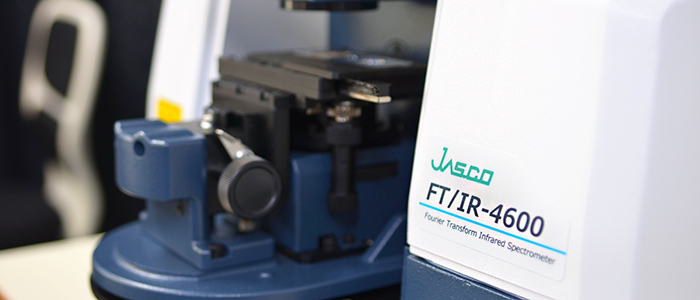Below is a step by step explanation of how we perform foreign substance and failure analyses.
• Morphological Observation
This can be performed using a microscope, metallographical microscope, optical observation microscope, scanning electron microscope (SEM), field emission scanning electron microscope (FE-SEM), scanning transmission electron microscope (STEM), atomic force microscope (AFM), or even the naked eye.
• Organic Compounds
In cases involving organic compounds, analysis can be performed using a Fourier transform infrared spectrophotometer (FT-IR), microscopic laser Raman spectroscopy, gas chromatography (GC), gas chromatography mass spectrometer (GC/MS), thermal analyzers (TG/DTA, TMA, DSC), high performance liquid chromatography (HPLC), high performance liquid chromatography mass spectrometer (LC/MS), gel permeation chromatography (GPC), time-of-flight secondary ion mass spectrometer (TOF-SIMS) and more.
• Inorganic Compounds
Equipment available for the analysis of inorganic compounds includes energy dispersive X-ray fluorescence analysis apparatus, wavelength dispersive X-ray fluorescence analyzer, energy dispersion type X-ray microanalyzer, secondary ion mass spectrometer (SIMS), time-of-flight secondary ion mass spectrometer (TOF-SIMS), micro Auger electron spectral analyzer (μ-AES), X-ray diffractometer (XRD), ion chromatograph (IC), induction coupled plasma mass spectrometer (ICP-MS).
• A Mixture of Organic and Inorganic Compounds
In the case of mixed compounds, analysis can be performed by a combination of the equipment listed in number 2 and 3.
Also available: We can also perform physical property evaluations giving analysis based on specific gravity, density, solidity, viscosity etc.



